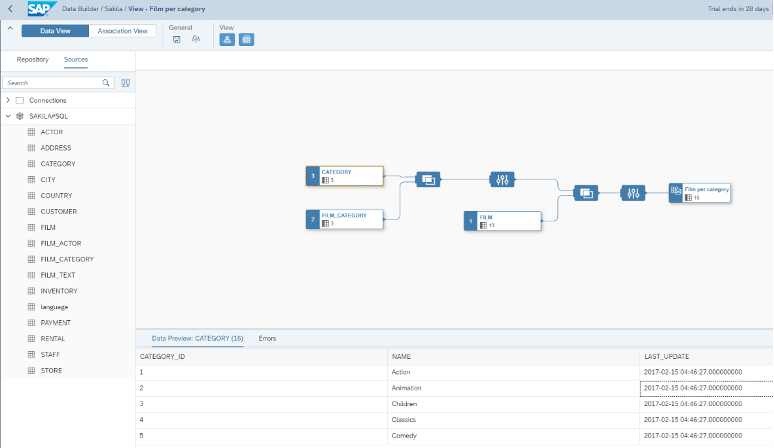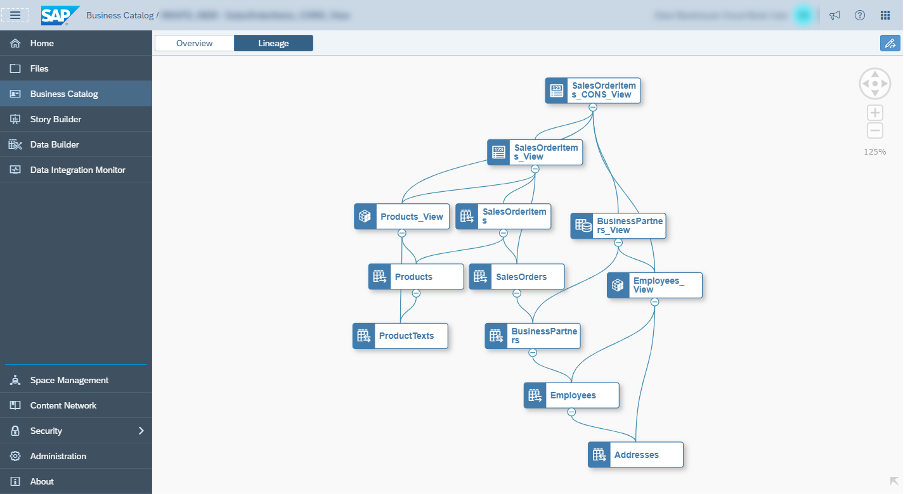A solution that is set to disrupt the Business Intelligence market in the areas of data warehousing, SaaS, and data governance.
Let’s be clear on this, SAP Data Warehouse Cloud is not a renaming or a new version of SAP HANA in the Cloud. Rather, it is a completely new solution that has its own space in the market.
En retrospectiva, estos dos últimos años han habido muchas notícias en relación al mercado de Business Intelligence. Salesforce compró Tableau en 2019 para entrar en el mundo de los cuadros de mandos. Qlik compró Attunity para entrar en el mercado del procesamiento y almacenamiento de datos en la nube. Google Cloud Platform adquirió Looker como una herramienta nativa en la nube de cuadros de mando. Mientras tanto, un jugador nuevo, Snowflake, entró en espe espacio con una de las OPI más exitosas en 2020. ¿Qué está sucediendo?
Well, with the advance in cloud technology, and the movement of enterprises aligning and partnering with the three major players in the cloud services market (Microsoft Azure, Amazon Web Services, and Google Cloud Platform), it’s no surprise that Business Intelligence should benefit from these movements and offer new solutions.
In general, we can identify three big trends in the Business Intelligence space: the movement to Cloud Data Warehousing, Software as a Service, and Data Governance. SAP Data Warehouse Cloud is positioning itself as a game-changer in the market by addressing each of these three trends.
1. Almacenamiento de Datos en la Nube
Bringing your data to the cloud has a lot of advantages, but one of the major benefits is that it frees you from getting stuck with a legacy on-premise data warehouse, which can have high opportunity costs.
Aunque algunas ventajas pueden ser fáciles de entender, existen algunas oportunidades ocultas que pueden no estar claras a primera vista.
A cloud data warehouse allows you to scale on the go, or with a few clicks, without a migration project. Plus, you can also benefit from advanced analytics or Machine Learning as a service, with low latency. If your data is in the cloud, you can access a wide range of services you can use without installing anything on your side. And lastly, if you want to do mobile analytics, it’s far easier, since you don’t have to deal with VPNs.
SAP Data Warehouse Cloud is a full-featured cloud data warehouse that leverages in-memory SAP HANA technology and extended storage for warm data. It also contains all the virtual data modeling that you would expect from SAP HANA to create rich models in seconds.
And perhaps most importantly, it’s not a black-box solution. It allows the creation of an open schema to connect with third-party tools, like ETL or other data processing solutions.
2. Software como un Servicio
The term Software as a Service - SaaS - has been with us for a while, but not used widely within data warehousing. If we look back to five years ago, few would have predicted that by 2020 we could implement a data warehouse without DBA (database administrators). Solutions as a Service allow us to get rid of all maintenance and focus on the usage of the solution itself, which in data warehousing is creating and extracting value from our enterprise data.
SAP Data Warehouse Cloud is a full SaaS solution, which means we no longer need DBAs or servers. We have an easy to use interface available in our cockpit to increase/decrease memory, disk, etc. It’s that simple.
3. Gobernancia de Datos
If you’ve read this far, you might be thinking SAP Data Warehouse Cloud is comparable to other solutions such as Snowflake, Google BigQuery, or similar.
This might be true for the above points, but in terms of Data Governance, SAP Data Warehouse Cloud is leading the way.
If you think of other cloud data warehouse solutions, they embrace data governance implementing an extra layer of security (usually classed as row-level security). Not bad, but nothing compared with SAP, and its expert implementation of enterprise analytics.
SAP Data Warehouse Cloud offers an extra layer, called Business Semantics, which allows business users not only to build their own dashboards but to create their own models without requiring an understanding of SQL. And it has nothing to do with drag-and-drop, it’s more than that. It is a reach experience with business terms, dictionaries, data ownerships, and data lineage, as illustrated below.
4. Propuesta de Valor
Finally, if we are to describe, as we understand it, the position of SAP Data Warehouse Cloud in the market, we could class it as an end-to-end enterprise cloud data warehouse solution, meaning:
Enterprise focused, with business terms and reach semantics
An end-to-end data solution, allowing business users to have an unbroken experience from data modeling to data storytelling with an embedded SAP Analytics Cloud
Cloud data warehouse, with unlimited scalability and pay-as-you-go capabilities
In our next article, we’ll be taking a deeper dive into the data governance features of SAP DWC, and the use of Spaces, which allow you to create an environment to manage resources and customize the user experience in a way that meets your individual business requirements.
In the meantime, feel free to contact us if you would know more about data governance, SaaS, or cloud data warehousing in DWC or to implement the SAP Data Warehouse Cloud as your enterprise data warehouse.





